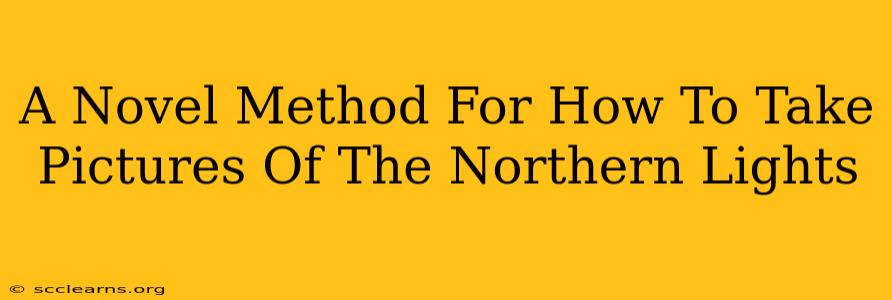Witnessing the Aurora Borealis is a breathtaking experience, but capturing its ethereal beauty in a photograph? That's a different challenge altogether. This guide unveils a novel approach, combining tried-and-true techniques with fresh perspectives to help you achieve stunning Northern Lights photography. Forget blurry, disappointing shots – let's get you capturing the magic!
Beyond the Basics: Planning Your Northern Lights Photoshoot
Before even thinking about camera settings, planning is crucial. The Northern Lights are notoriously unpredictable, so preparation is key to maximizing your chances of success.
1. Location, Location, Location: Light Pollution is Your Enemy
Minimize light pollution. Escape city lights! Find a location with minimal light interference. Use light pollution maps to scout dark sky areas. The further away from urban centers, the better your chances of seeing – and photographing – a vibrant aurora.
2. Predicting the Aurora: Timing is Everything
Utilize aurora forecasting websites and apps. These tools predict aurora activity based on solar wind and geomagnetic indices. Knowing when the aurora is likely to appear significantly improves your chances of a successful photoshoot. Don't just rely on one source; compare several predictions for a more accurate forecast.
3. Embrace the Weather: Patience is a Virtue
Check the weather forecast meticulously. Clear skies are paramount. Even a slightly cloudy night can obscure the aurora. Cloud cover apps and weather radar are your friends here. Be prepared for cold temperatures and pack accordingly – warm layers, hand warmers, and a thermos of hot chocolate are essential!
Camera Settings & Techniques: Mastering the Aurora
Now for the technical aspects. This is where our novel approach comes into play. We're not just talking about standard settings; we're talking about strategic adjustments for optimal results.
1. Embrace the Manual Mode: Taking Control
Shoot in manual mode (M). This gives you complete control over your camera's aperture, shutter speed, and ISO. Automatic modes often struggle with the low-light conditions of aurora photography.
2. Aperture: Let the Light In
Use a wide aperture (low f-number, e.g., f/2.8 or f/4). This maximizes the amount of light reaching your sensor, crucial for capturing faint auroral displays.
3. Shutter Speed: Finding the Sweet Spot
Experiment with shutter speed (long exposures). Start around 10-20 seconds and adjust based on the aurora's brightness and movement. Longer exposures capture more light but risk blurring if the aurora is very active. A tripod is absolutely essential for sharp images with long exposures.
4. ISO: Balancing Sensitivity and Noise
Increase your ISO cautiously. Higher ISO values increase sensitivity to light, but also introduce noise (grain) into your images. Start with ISO 800-1600 and adjust depending on the aurora's intensity and the level of acceptable noise. Noise reduction software can help later, but it's best to minimize noise in-camera where possible.
5. Focus: Infinity and Beyond
Set your focus to infinity. Autofocus often struggles in low light, so manual focus is usually better. You can also use live view and zoom in to fine-tune your focus on distant stars.
Novel Approach: Composition and Creativity
This is where you go beyond the technical and inject your artistic vision.
1. Foreground Interest: Adding Depth and Scale
Include a foreground element. A tree, a cabin, or a snow-covered landscape adds depth and scale to your aurora photographs, creating a more compelling and visually interesting image. This is what truly elevates your pictures from snapshots to art.
2. Capturing Movement and Color: Beyond Static Shots
Experiment with different shutter speeds to capture the movement of the aurora. Varying shutter speeds can give you a range of effects, from sharp, frozen-in-time images to long, flowing streaks of light. Pay close attention to how the color of the aurora changes throughout the night – often subtle shifts are evident which add to the magic!
3. Post-Processing: Enhancing Your Masterpiece
Use image editing software (like Adobe Lightroom or Photoshop) to enhance your photos. This is where you can fine-tune the colors, contrast, and sharpness, bringing out the full splendor of the aurora. Remember, subtle adjustments are often the most effective.
By following these steps and incorporating your own creative vision, you'll be well on your way to capturing breathtaking photographs of the Northern Lights – images that truly reflect the magic of this awe-inspiring natural phenomenon. Remember, patience, preparation, and a touch of experimentation are the keys to unlocking the secrets of aurora photography. Happy shooting!

